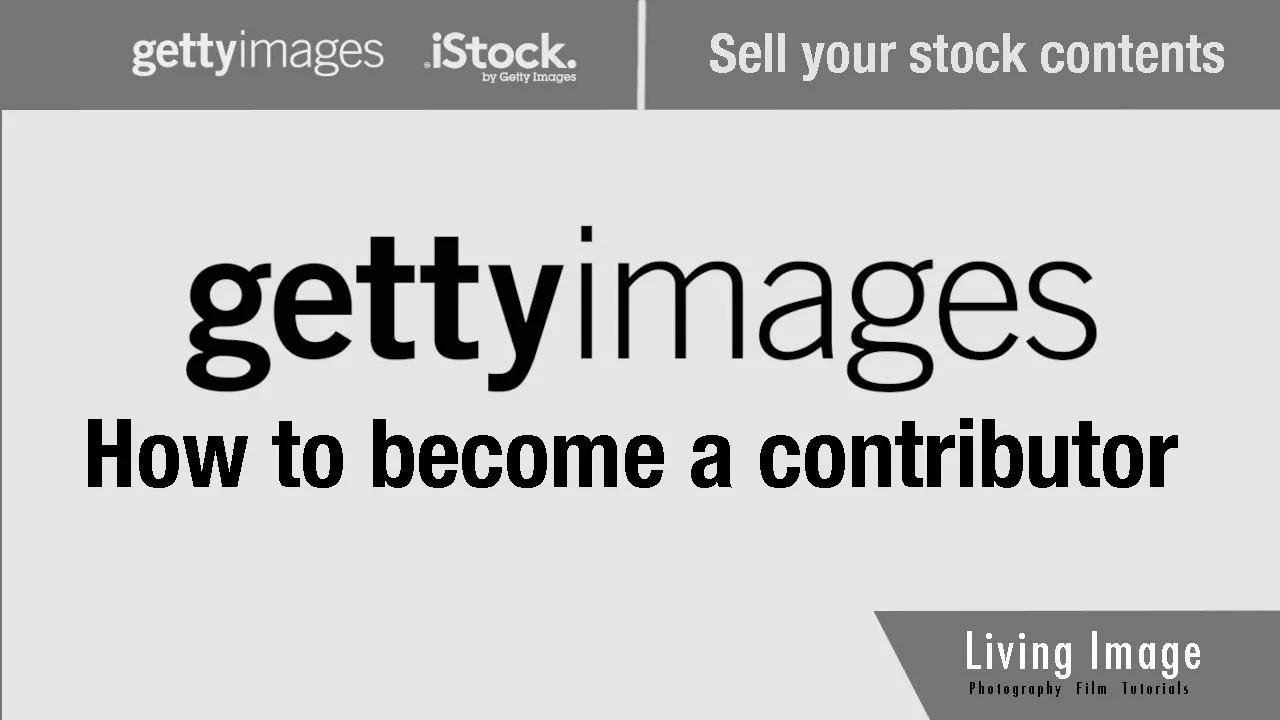When it comes to stock photography, Getty Images stands out as a leading platform for contributors to share their creative work. But have you ever wondered how contributors actually earn money through Getty Images? In this blog post, we’ll explore the earnings model for contributors, shedding light on how they can maximize their income while working with this renowned agency. Whether you’re a seasoned photographer or just starting, understanding this model is crucial for your success.
Overview of Getty Images

Getty Images is a global leader in visual communication, providing high-quality stock images, editorial photos, videos, and music. Founded in 1995, the company has grown exponentially, amassing a library of millions of assets that cater to a diverse clientele, including businesses, marketers, and media outlets. Here are some key points about Getty Images:
- Extensive Library: With over 200 million assets, Getty Images offers a vast selection of photographs, illustrations, and videos that cover various topics and styles.
- Global Reach: The platform serves clients worldwide, making it a go-to resource for visual content across different industries.
- Contributor Community: Getty Images boasts a large community of contributors, including professional photographers, videographers, and artists who share their work and earn royalties.
- Licensing Options: Getty Images offers multiple licensing options, such as rights-managed and royalty-free licenses, allowing contributors to choose how their work is used and monetized.
- Innovative Technology: The company leverages advanced technology to streamline the submission process, making it easier for contributors to upload and manage their portfolios.
By understanding the platform's structure, contributors can make informed decisions about their submissions and ultimately enhance their earnings potential.
Also Read This: How Did Anthony "Rumble" Johnson Pass? An In-Depth Tribute to His Life and Career
How Contributors Are Compensated

When it comes to contributing to Getty Images, understanding the compensation structure is crucial for contributors looking to monetize their creative work. Getty Images operates on a commission-based model, meaning that contributors earn a percentage of the revenue generated from their content. This can vary based on several factors, including licensing type and exclusivity.
Typically, here’s how the compensation works:
- Royalty Percentage: Contributors usually earn between 15% to 45% of the licensing fee, depending on whether they’re exclusive or non-exclusive contributors. Exclusive contributors often receive a higher percentage.
- Content Type: Different types of content can fetch different rates. For instance, editorial images might have a different payout compared to stock images or video clips.
- Sales Volume: The more popular a contributor’s work is, the more they can earn. Getty Images has analytics tools that help contributors track their sales performance.
In addition to direct sales, contributors may also earn money from:
- Bonuses: Getty Images occasionally offers bonuses for top-performing contributors, incentivizing high-quality submissions.
- Contests and Promotions: Participating in promotional events can also lead to additional earnings or exposure.
Overall, the compensation model encourages contributors to produce high-quality, marketable content while providing them with multiple avenues to earn money.
Also Read This: How to Watch Dailymotion Videos Offline on iPhone
Different Types of Licensing Models
Getty Images offers various licensing models that dictate how images and videos can be used, and this significantly affects both contributors and buyers. Understanding these models is essential for contributors to maximize their earnings.
Here are the primary types of licensing models:
| Licensing Model | Description | Use Cases |
|---|---|---|
| Royalty-Free (RF) | Allows buyers to use the image multiple times without paying additional fees. | Marketing materials, websites, and social media. |
| Rights-Managed (RM) | Licenses the image for a specific use, duration, and territory. Prices vary based on these factors. | Editorial publications and advertising campaigns. |
| Editorial Use Only | Images can only be used for newsworthy content and not for commercial purposes. | News articles, blogs, and magazines. |
Each licensing model carries its own implications for contributors:
- Royalty-Free: Offers a more straightforward selling process but typically lower payouts per image.
- Rights-Managed: Can yield higher earnings, but requires proper negotiation and understanding of usage rights.
- Editorial Use Only: Limits the market but can still be lucrative for high-demand images.
By knowing these licensing models, contributors can tailor their portfolios to suit market demands, ultimately enhancing their earning potential.
Also Read This: Elegant Dining Made Simple with Fork and Knife for Rice
Factors Affecting Earnings
When it comes to earning money as a contributor on Getty Images, several factors come into play that can significantly impact your overall earnings. Understanding these factors can help you strategize better and maximize your income. Here’s a breakdown of the key elements:
- Content Quality: High-quality images and videos are more likely to be purchased. Invest in good equipment and hone your skills to improve your craft.
- Market Demand: Certain subjects and themes are trending at different times. Keeping an eye on market trends can help you tailor your submissions to what buyers are actively seeking.
- Exclusivity: If you’re offering exclusive content, you may be able to command higher prices. However, this means you can’t sell the same images elsewhere.
- Licensing Type: Getty Images offers different licensing options like royalty-free and rights-managed. Each comes with its own pricing structure, which can affect your earnings.
- Geographic Reach: Images that appeal to a global audience can earn more. Think about how your work can resonate with diverse markets.
- Promotion: Actively promoting your portfolio on social media and other platforms can drive more traffic to your work, potentially leading to more sales.
By being mindful of these factors, you can better position yourself and your work for success on Getty Images.
Also Read This: Create a Stylish Pencil Pouch at Home
Tips for Increasing Your Earnings
Now that you know the factors affecting your earnings, let’s look at some practical tips to help boost your income as a Getty Images contributor. Here’s how you can enhance your earning potential:
- Diversify Your Portfolio: Offer a wide range of subjects and styles. The more variety you have, the higher the likelihood of appealing to various buyers.
- Stay Updated with Trends: Regularly check what's trending in the stock photo market. Use tools like Google Trends or social media platforms to gauge public interest.
- Optimize Your Metadata: Properly tagging and describing your images can make them easier to find. Use relevant keywords and detailed descriptions to improve visibility.
- Participate in Challenges: Getty often runs contests and challenges. Participating can not only boost your exposure but also give you a chance to win cash or prizes.
- Network with Other Contributors: Building relationships with fellow photographers can provide insights and tips that can improve your craft and business strategies.
- Leverage Social Media: Share your work on platforms like Instagram, Pinterest, or Twitter. Engaging with potential buyers directly can drive traffic to your Getty portfolio.
Remember, increasing your earnings is a gradual process, but with persistence and strategic efforts, you can significantly enhance your income as a Getty Images contributor.
Understanding Getty Images Earnings Model for Contributors
Getty Images is a leading global visual content creator that offers a platform for photographers, videographers, and creators to sell their images and footage. Understanding their earnings model is crucial for contributors aiming to maximize their revenue. The model is primarily based on two categories: royalties and licensing.
1. Royalty Structure
Getty Images operates on a royalty system that rewards contributors based on the sales of their content. Here’s a breakdown of how this works:
- Exclusive Contributors: Contributors who sign exclusive agreements with Getty Images receive a higher percentage of the sales revenue, often ranging from 30% to 45% of the sale price.
- Non-Exclusive Contributors: Those who are non-exclusive earn a lower percentage, typically between 15% and 30% of the sale price.
2. Licensing Types
Getty Images offers various licensing options that affect earnings:
| License Type | Description | Earnings Potential |
|---|---|---|
| Royalty-Free (RF) | Buyers pay a one-time fee for unlimited use. | Lower earnings per sale but higher volume. |
| Rights Managed (RM) | Pricing based on the use, duration, and exclusivity. | Higher earnings per sale but less frequent sales. |
Understanding these components can help contributors make informed decisions about their content strategy and pricing. Additionally, actively promoting their portfolios and staying updated with market trends can significantly enhance earning potential.
In conclusion, grasping the intricacies of Getty Images' earnings model enables contributors to strategically position themselves for greater financial success, leveraging both royalty structures and licensing types effectively.